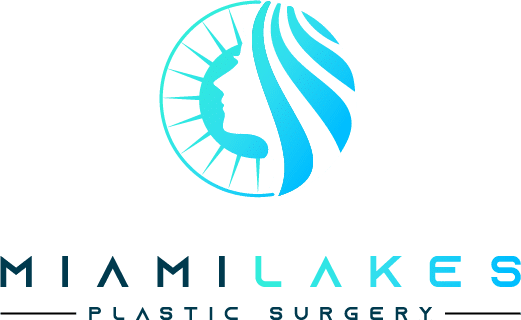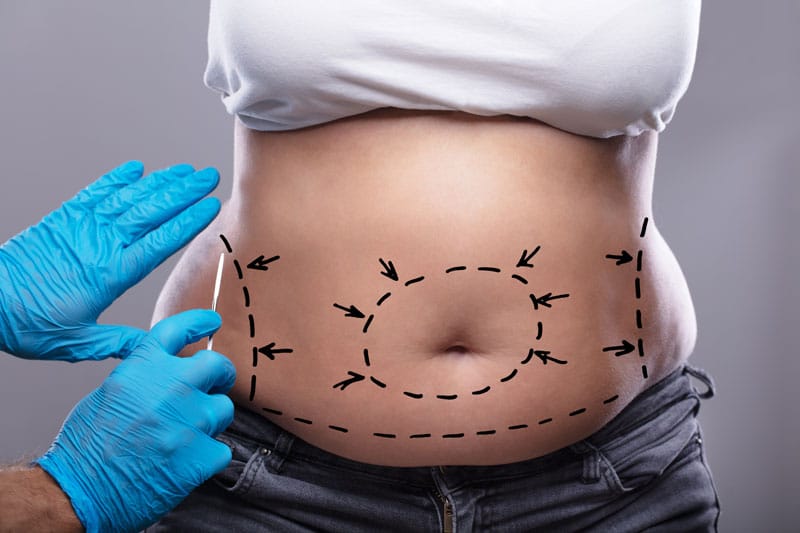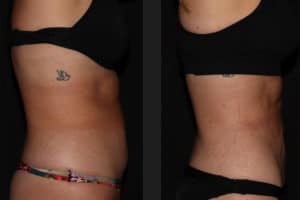A tummy tuck (technically termed abdominoplasty) is a major surgical procedure to remove excess skin and fat from the middle and lower abdomen and to tighten the muscles of the abdominal wall. The procedure can dramatically reduce the appearance of a protruding abdomen, but it produces a permanent scar that, depending on the extent of the original problem and the surgery required to correct it, can extend from hip to hip.
Is this procedure right for you?
The ideal patient for abdominoplasty is in fairly good shape but may have loose abdominal skin or a large fat deposit that has not been reduced with diet and exercise. This procedure is also appropriate for women with displaced abdominal muscles due to pregnancy, those who have had bariatric surgery to treat obesity, or older patients who are experiencing reduced elasticity in their skin.
You should wait to have this surgery if you still plan to become pregnant or if you plan to lose a significant amount of weight. Patients with scars from previous abdominal surgery may find that their scars become more prominent after having an abdominoplasty.
Is it possible to have another procedure done at the same time?
We do not recommend combining a standard or extended abdominoplasty with other procedures, as the risk of complications is significantly increased. Liposuction may be done together with a mini or modified abdominoplasty to remove fat from the hips.
What should I expect from the post-surgery recovery period?
Swelling and discomfort from the surgery will last several days after the surgery, but pain medication can be prescribed. You should try to walk as soon as possible after the procedure. You will need to wear a support garment over your dressing for some time. Stitches on the skin will be removed within a week, and internal sutures protruding through the skin will be removed after two weeks.
Will I have any scarring?
While this surgery does leave a scar, it will be healed within one year and can be hidden under most clothing, including swimsuits.
What does abdominoplasty entail?
There are several types of abdominoplasty, including a mini-abdominoplasty, also called a mini-tummy tuck, which is appropriate for those patients with fat deposits primarily below the belly button; modified abdominoplasty; standard abdominoplasty; or extended abdominoplasty.
Standard and extended abdominoplasty require an incision from one hipbone to the other, with a second-round the navel. After separating the skin from the muscles, the surgeon will tighten them and secure them in the new location with sutures. Extra skin is removed and the remaining skin is stretched down over the abdomen, and a new hole cut for the belly button. When the skin is secured in its new location with stitches, a tube may also be temporarily placed to drain excess fluid.
Mini abdominoplasty, in contrast, keeps the belly button in place and only involves trimming the skin below, then stitching the reduced section into place.
How long can I expect the results to last?
The results of this surgery are permanent, and most patients are very pleased with their outcomes. Keeping a balanced diet and regular exercise regimen once healed will help keep the abdominal area in good shape.
What risks are involved?
Surgery has inherent risks of complications including bleeding, infection, adverse reactions to anesthesia, poor wound healing, and blood clots. Blood clotting risk can be reduced by resuming light physical activity soon after surgery. Poor healing may result in unsightly scarring, which can be corrected with a second surgery. Closely following your surgeon’s instructions, particularly concerning physical activity, before and after surgery will help minimize this risk.
What will I need to do before surgery?
If you smoke, you will need to stop smoking far ahead of the procedure; smoking increases the risk of complications and poor healing, as it adversely affects blood circulation in the skin. You will also need to avoid getting too much sun or going on a strict diet before surgery. On the day of your surgery, make sure someone is available to drive you home.
Where will the surgery take place?
Abdominoplasty can be done in a hospital but is generally performed in our office or an outpatient surgery center.
What should I expect from the post-surgery recovery period?
Depending on the pre-surgery condition of your abdominal muscles, it can take one to three weeks before you feel ready to return to work, and long before you feel back to normal. While light exercise will help the healing process, reduce swelling, strengthen abdominal muscles, and prevent blood clots, patients should avoid strenuous activity until they are no longer experiencing discomfort.





